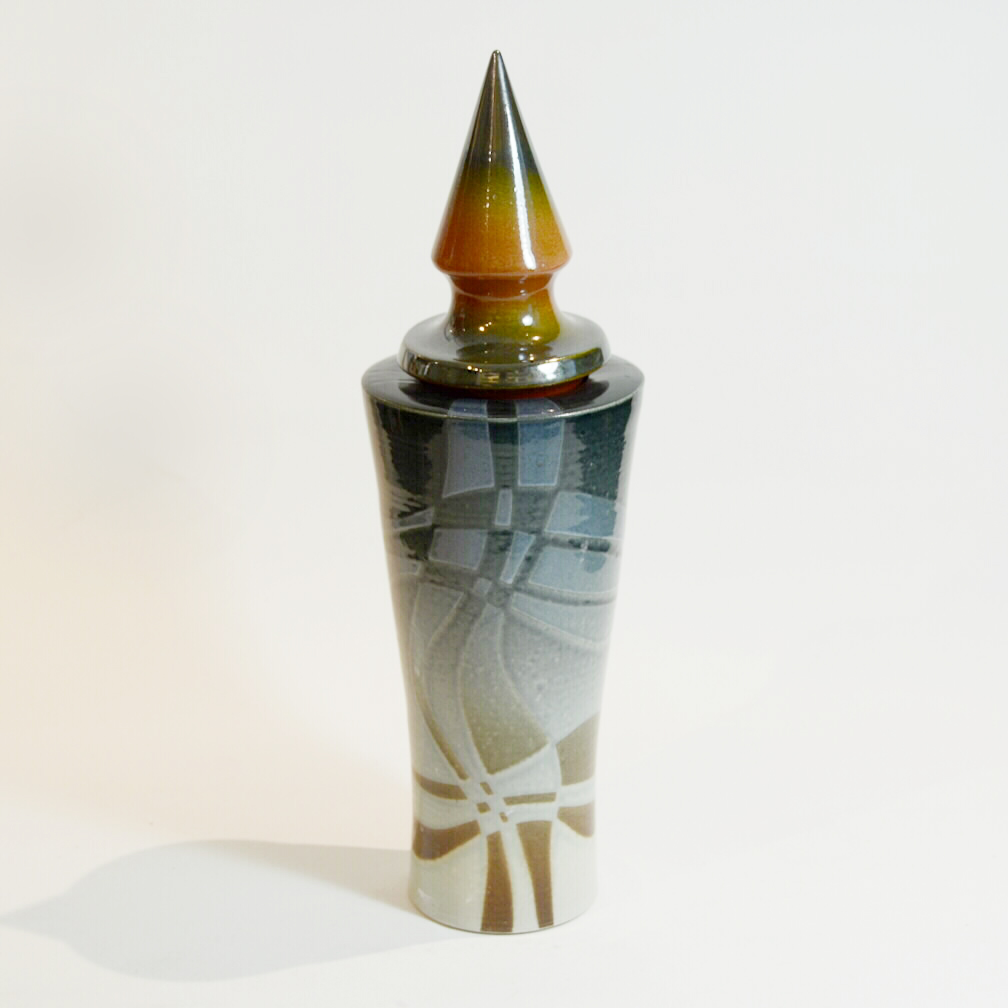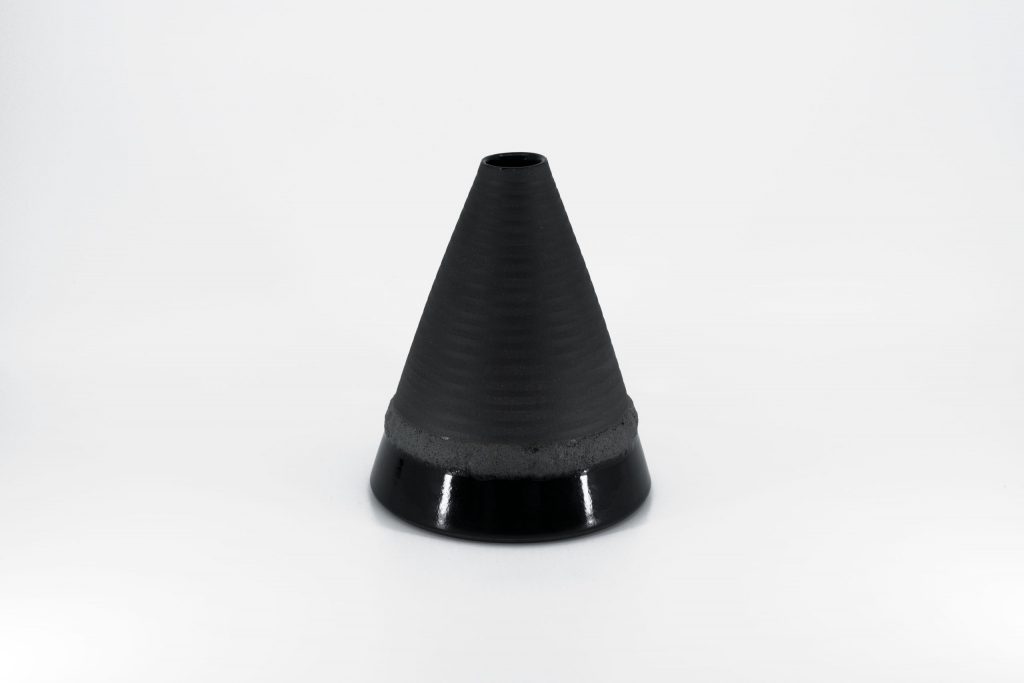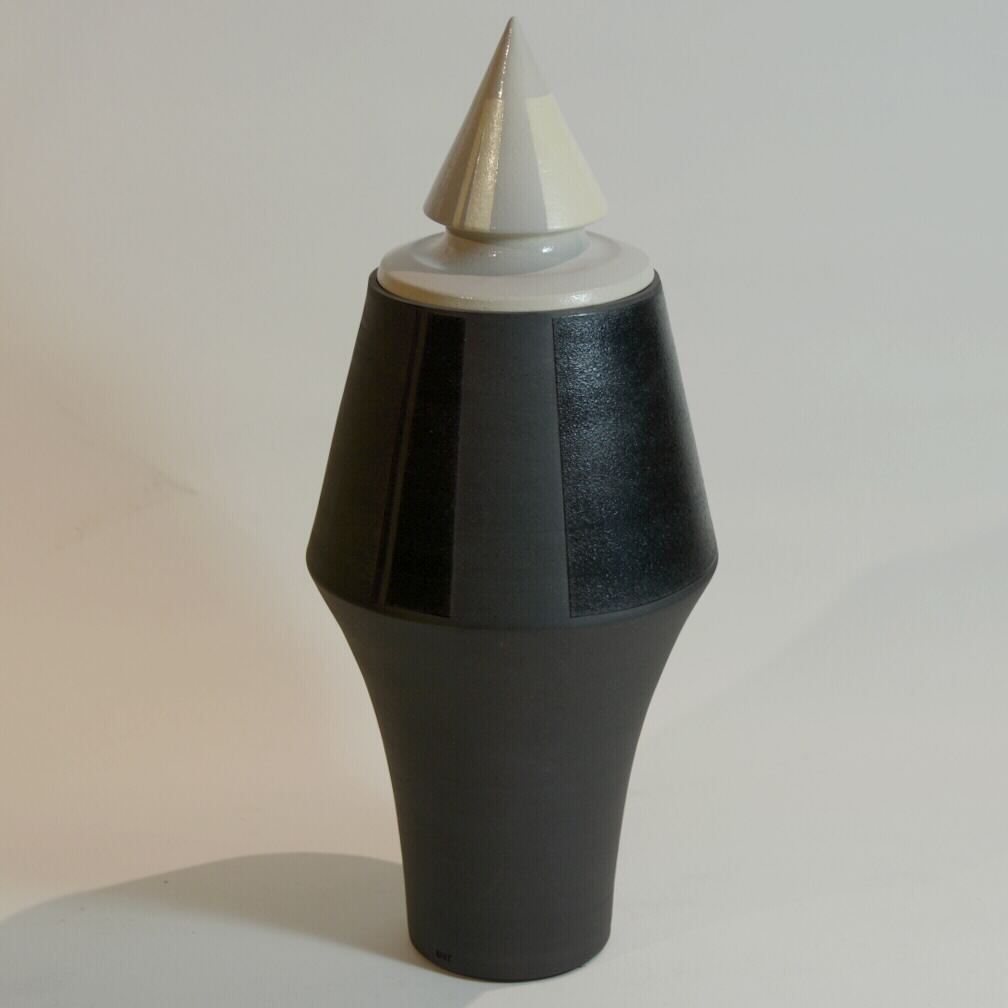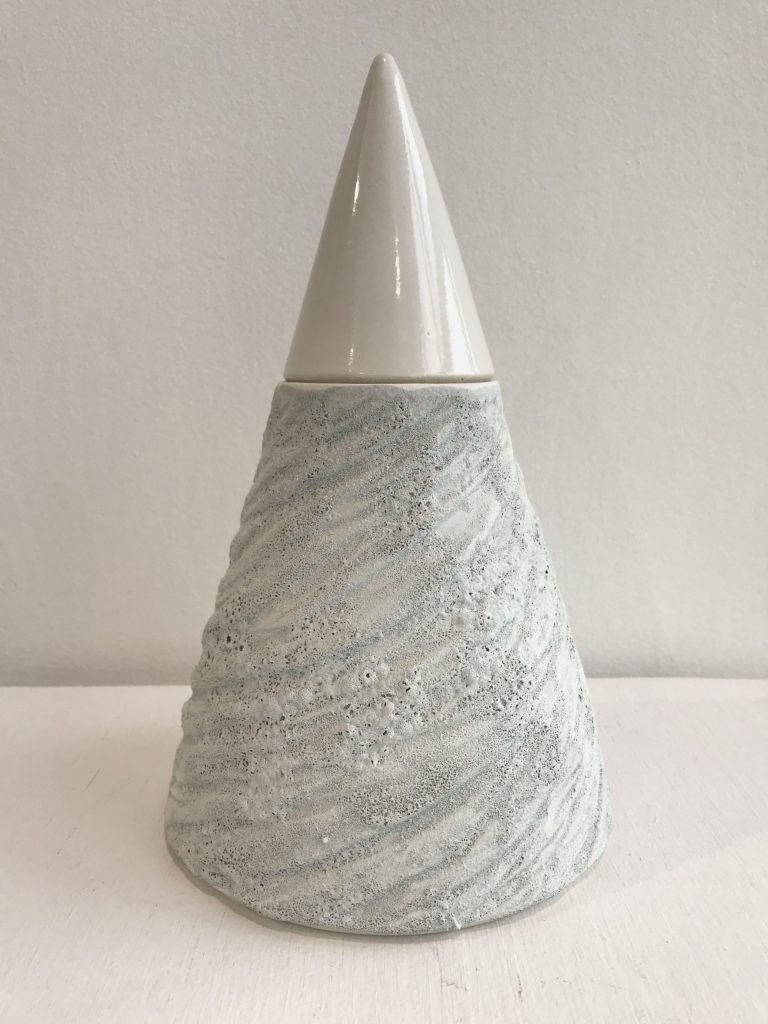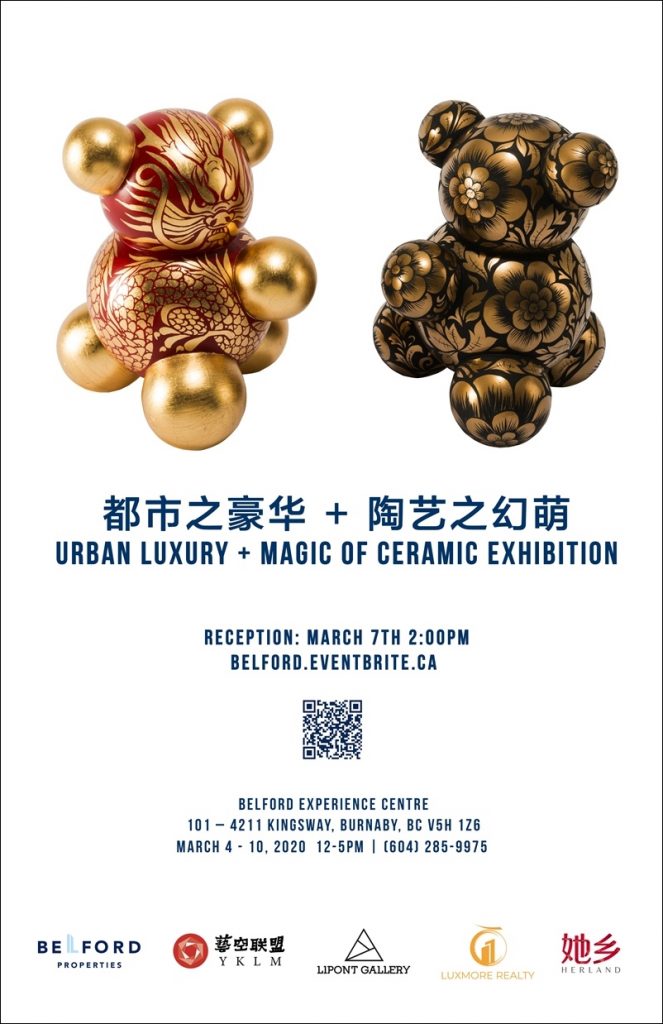
Eugene Radvenis was first introduced to pottery while studying architecture in California. Following his move to Vancouver during the 1970s, he would spend the next twenty years working in an architectural firm, always eager to return to his early passion for ceramic.
Eugene enrolled in a pottery class at the West End Community Centre and has since been an active member of various pottery clubs, as well as attending various workshops in Italy, France, and Portugal to refine his craft. Radvenis works primarily with wheel-thrown vessels and his practice is informed by both his background in architecture and his search for simple, minimalist forms. His vessels uniquely explore the duality of texture, between roughly finished clay and the soft glossy glaze applied to areas of the vessels. To create his current series, he relied on Raku and mid-range firing techniques, each providing unique opportunities for the artist to fully determine their final appearance. His exploration of conical shapes is rooted in an enduring history of twentieth-century artists fascinated by geometry. His art also addresses how certain vessels can acquire multiple identities when fitted with a suitable lid, in this particular case a “cone head”. A vase, for example, can easily be transformed into a jar or an urn.
Radvenis is a member of the BC Potters Guild where his work has been exhibited in several members shows. His current workspace is at Parkgate Pottery Studio in North Vancouver.
尤金·拉德维尼斯 (Eugene Radvenis) 在加利福尼亚学习建筑时首次接触陶器。 1970年代搬到温哥华后,他将在接下来的20年里在一家建筑公司工作,总是渴望重拾对陶瓷的早期热情。
尤金在西区社区中心参加了陶艺班,此后一直是各种陶艺俱乐部的活跃成员,并参加了意大利、法国和葡萄牙的各种研讨会,以完善他的工艺。他的实践源于他的建筑背景和他对简单、极简主义形式的追求。他的器皿独特地探索了质地的二元性,介于粗制粘土和应用于器皿区域的柔软光泽釉之间。为了创作他目前的系列,他依靠Raku(乐烧)和中距技术,每种技术都为艺术家提供了独特的机会来完全确定他们的最终外观。他对圆锥形状的探索植根于二十世纪对几何的着迷。他的艺术还探讨了某些容器在装有合适的盖子时如何获得多重身份,在这种特殊情况下是“锥头”。例如,花瓶很容易变成罐子或瓮。
Radvenis是加拿大卑诗省陶艺组成员,他的作品曾在多个会员展览中展出。他目前的工作地点在北温哥华的Parkgate Pottery Studio。




